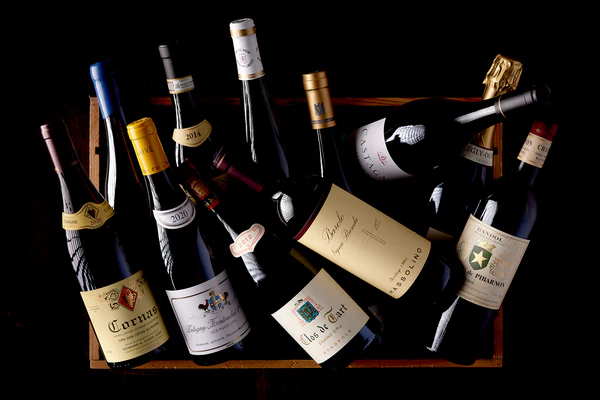July 15, 2024
Preserving the Past: The Best Storage Practices for Rare Wines

Rare and valuable wines are not just beverages; they are liquid treasures that encapsulate history, artistry, and craftsmanship. Proper storage is essential to preserve their quality and ensure they age gracefully over time. This comprehensive guide will delve into the best storage practices for rare wines, providing tips on how to maintain optimal conditions and safeguard these precious assets.
The Importance of Proper Wine Storage
Proper storage is crucial for maintaining the integrity and value of rare wines. Wine is a living product that continues to evolve in the bottle, and the conditions under which it is stored can significantly impact its flavour, aroma, and overall quality. Inappropriate storage can lead to premature ageing, spoilage, or even total loss of a valuable bottle. Therefore, understanding and implementing the best storage practices is essential for any wine collector or enthusiast.
Ideal Temperature
Temperature is one of the most critical factors in wine storage. Wines should be stored at a consistent temperature to prevent premature ageing or spoilage. The ideal storage temperature for wine is between 10-15°C (50-59°F). This range allows the wine to age slowly and develop complex flavours over time. Fluctuations in temperature can cause the wine to expand and contract, leading to seepage or oxidation. Maintaining a stable temperature is crucial to preserving the wine’s quality. For long-term storage, it’s better to err on the cooler side of the spectrum, as warmer temperatures can accelerate the ageing process and potentially spoil the wine.
Humidity Control
Humidity levels also play a significant role in wine storage. Proper humidity helps maintain the integrity of the cork, which acts as a seal to protect the wine from oxygen exposure. The ideal humidity level for wine storage is between 60-70%. This range prevents the cork from drying out and shrinking, which can lead to oxidation. While high humidity is beneficial, levels above 70% can promote the growth of mould on the cork and labels. It’s important to strike a balance to avoid this issue.
Light Exposure
Light, particularly ultraviolet (UV) light, can be detrimental to wine. UV light can cause chemical reactions that alter the wine’s flavour and aroma, leading to what is known as “light-struck” wine. Store wines in a dark environment away from direct sunlight and fluorescent lights. Wine cabinets and cellars should have solid doors or UV-filtering glass to protect the bottles. If light is necessary for visibility, use low-intensity, incandescent bulbs, which emit less UV light.
Vibration and Movement
Vibration can disturb the sediment in wine, affecting its clarity and taste. It can also accelerate chemical reactions within the wine, potentially leading to premature ageing. Ensure that wine storage areas are free from constant vibration. Avoid placing wine racks near appliances, machinery, or areas with heavy foot traffic. Use wine racks or shelves designed to hold bottles securely and minimise movement.
Bottle Position
The position in which wine bottles are stored can influence the condition of the cork and the wine’s ageing process. Store wine bottles horizontally to keep the cork moist. A moist cork prevents air from entering the bottle and oxidising the wine. For sparkling wines or bottles with sediment, a slight angle can help prevent the cork from drying out and allow sediment to settle at the bottom.
Air Quality and Odours
Wine is highly sensitive to its environment, including the air quality around it. Strong odours can permeate the cork and affect the wine’s flavour. Keep the storage area free from strong-smelling substances like paint, chemicals, or cleaning agents. Ensure good ventilation to maintain clean air and prevent musty odours.
Investing in a Wine Cellar or Wine Fridge
For serious collectors, investing in a dedicated wine cellar or wine fridge can provide the ideal conditions for storing rare wines. A wine cellar offers the best long-term storage solution, providing a stable, controlled environment for large collections. It can be customised to maintain the perfect temperature, humidity, and lighting conditions. For smaller collections or more accessible storage, a wine fridge can offer a convenient solution. High-quality wine fridges are designed to maintain optimal storage conditions and protect wine from external factors.
Monitoring and Maintenance
Regular monitoring and maintenance of your wine storage conditions are essential to ensure the longevity of your rare wines. Use thermometers and hygrometers to regularly check temperature and humidity levels. Make adjustments as necessary to maintain optimal conditions. Periodically inspect the storage area for signs of mould, odours, or other issues that could affect the wine. For large or valuable collections, consider professional wine storage services that offer climate-controlled facilities and expert care.
Preserving the past through proper storage practices is essential for maintaining the quality and value of rare wines. By adhering to the best storage practices—such as controlling temperature and humidity, minimising light exposure, avoiding vibration, and ensuring clean air—collectors can ensure that their prized bottles age gracefully and reach their full potential. Whether you are a seasoned collector or new to the world of fine wine, understanding and implementing these storage tips will help protect your investment and enhance your wine-drinking experience.
